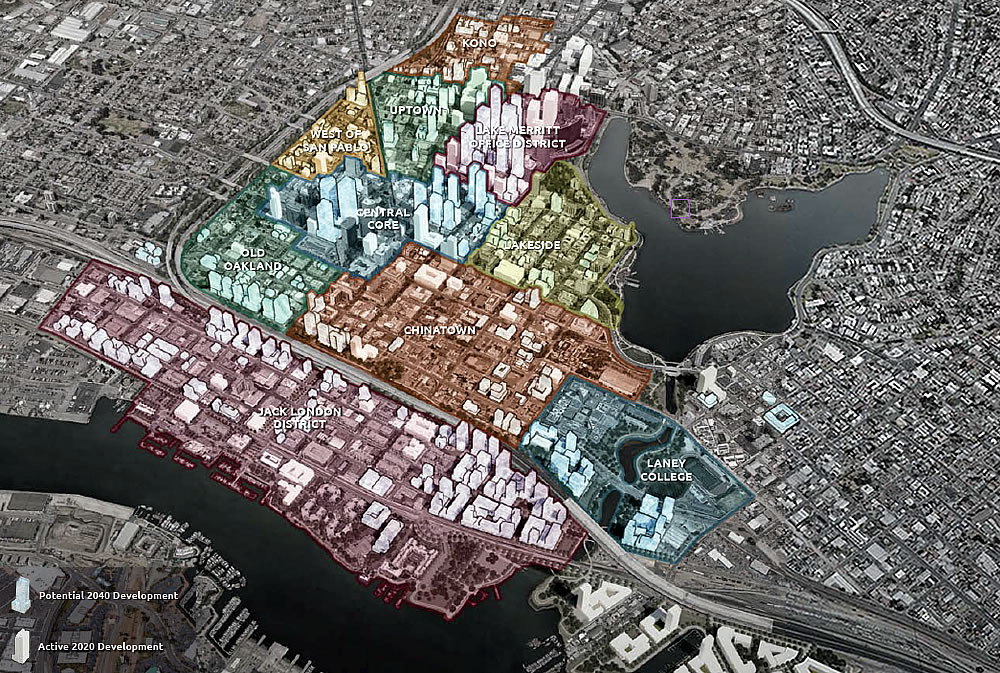While the average asking rent for an apartment in Oakland hasn’t declined as much as it has in San Francisco, either in the absolute or relatively, it has ticked down another 1.4 percent over the past two months to $2,300, which is down 19 percent on a year-over-year basis and nearly 23 percent below a 2016-era peak of closer to $3,000 a month, with the average asking rent for a one-bedroom in the city having dropped to under $2,000 a month versus closer to $2,500 at peak.
At the same time, listing activity for available apartments in Oakland, which had remained relatively stable through the second quarter of 2020, has doubled versus the same time last year.
And while the jump in listing activity in Oakland still lags the even larger jump in San Francisco, as does the relative decline in rents, the differentials have closed.

When I look at the supply the advertised prices always seem a lot higher than these averages.
The averages and trends above are based on over 8,000 data points for actual listings in Oakland over the past year.
I don’t really doubt your methods, I just wonder about the bias in whatever I am looking at.
Ditto. Just like when they tell you the “average” gas prices via the Lundberg survey. I go to a very cheap station and wait in a very long line and I’m still paying well over 50 cents more than their “average” amount. This shows you that “data points,” like the data in digital advertising and all other digitally-gathered metrics, are BS. But everyone keeps believing in them over what their own reality shows.
I believe the Lundberg prices are pre-tax (and if you get nothing else from the link, it should be an appreciation of the complexities of constructing a price index…even for something as seemingly straightforward as gas prices)
Same can be said about south bay rents. I am sure they are down 15% ~ 20% as well.
AND, more importantly, I dont believe these drops are 100% attributable to COVID. There are also some longer term trend in here.
Reduced rents will inevitably pull down property prices in the next 1-3 years. I remember seeing maybe 10 MFH listings in SF in 2019, and there are now maybe 200 on the market now. And I think this is going to higher in 2021. Great opportunities to buy in 2021/2022.
Thats right, multi-family is still overpriced. Smart firms are re-allocating outside of the bay today but the rest will follow in the next year or two as their vacancy losses mount. They are still trying to get 2019 rents in Dec 2020 – the party is just getting started. Those with liquid capital ready to roll will make a lot of money at the end of this decade.
I just did an calculation since there is nothing else to do on this NY morning:
Back in 2018, the CAP rate (operating income before mortgage payment/purchase price) was routinely at 1.5% ish. Today, you can easily get high 3%, sometimes 4%. I need the CAP to be at 4.8%, or a price reduction of 20% from today’s level, to be break even from day 1.
With sky high prices, and can’t-be-any-lower interest rates, I can’t bank on any future appreciation for a while. Therefore, unless I can get to break even from day 1, it is not going to be worth it.
Is a price reduction of 20% even possible in 2021/2022? Maybe, maybe not. We shall see.
“differentials have closed”
…and will probably close further since, as an (always) astute observer pointed out the other day, much development is about to come on-line in the 27th/Grand district (which, unlike most of these pretty pastel-coloured parallelepipeds that represent a possible future, is a reality).